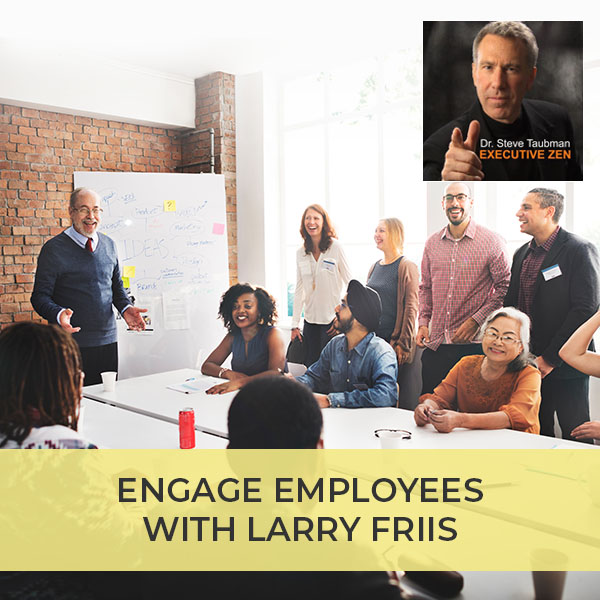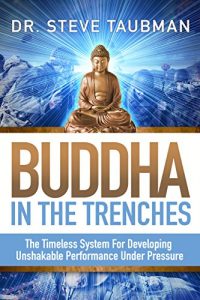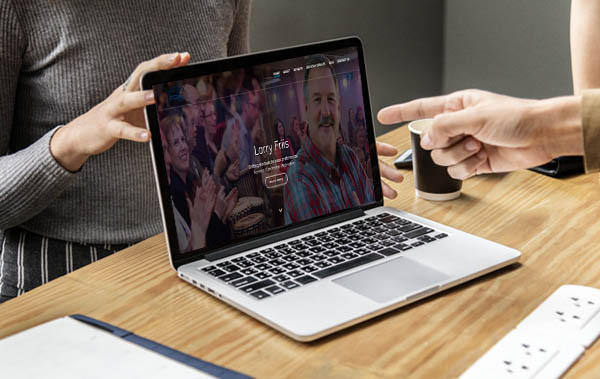

So often, people go to work and leave their full hearts behind. They only simply do what they’re told to do, losing that connection and spark that makes work fulfilling. Many employees now separate themselves from their job. In this episode, I’m joined by speaker, author, and business consultant Larry Friis, as we discuss his work on increasing employee engagement. How do we get people to work as if they are working for themselves? How can they place their hearts into it? This is a timely topic and an outstanding conversation that will have direct impact on how you do business! 🙂
—
Watch the episode here:
Listen to the podcast here:
Engage Employees with Larry Friis
We’ve got a great guest that I’ll be introducing to you. We are going to be talking about employee engagement and how to get your employees fully engaged in the process of contributing to the outcome of your work. This is a problem that many employers have. How do you get your people involved in participating in the work that’s necessary and really owning it? So often people go to work and they leave a part of themselves behind. They do what they’re told to do but they don’t really bring their full heart, soul and spirit with them. Our guest who will be joining me is an expert in this area. I like his work. I like the guy himself. This is going to be a great conversation.
In my own personal work life, I’ve worked myself for as long as I can remember. I’ve never had to muster up the courage and whatever it is that it takes to be an engaged employee because I wasn’t really an employee. What I’ve noticed in hiring people over the years is that some people have a natural predilection for owning the job. They naturally have that ability to be engaged. To treat the work as if it’s their own. Now, when I go out and I talk to entrepreneurs and I ask, “How many of you work for yourself?” The entrepreneurs raise their hands and the people who are not entrepreneurs typically don’t raise their hands. They don’t work for themselves as far as they are concerned. The point that I’m always making whenever I speak to groups that are mixed, there are entrepreneurs on hand as well as employees, is that you’ll always succeed much more effectively if you treat the job as if you work for yourself. As if the work that you’re doing matters personally to you, not to your boss, not so you get a paycheck but that you truly bring your heart, soul and spirit to the work that you’re doing.
When you do that, the ownership that you take starts to have an impact on how you’re treated by your employer by the value of your work, by your sense of personal satisfaction and all sorts of other important indices of success. Whether you’re working for yourself, you’re working for someone else or you happen to have employees, start engaging the idea that engagement starts with everyone treating the job as if it is their business. That’s going to be one of the things I want to talk to our guest about. I want to get his take on that. I always start my shows solo like this and I give my preamble or as I call it, my pre-ramble. Then I ask my guest, once I’ve gotten them on board to set me straight. If anything I’ve said has been completely ludicrous, he’ll put us on the right path.

Buddha In The Trenches: The Timeless System For Developing Unshakable Performance Under Pressure
I did want to mention that I’ve been running a little bit of a special that I wanted to offer you. My book, Buddha in the Trenches, which I’m very proud of, is about being at your best when things are at their worst, common chaos, bulletproof, happy for no reason and stress-impervious. book has done very well. I was given the honor of being a guest on The Jenny McCarthy Show. When I went on her show, one of the things we got to talk about was this idea of mindfulness and stress and how mindfulness impacts stress. She gave me an opportunity to tell everybody about my book. What I did was I offered a special. If people went to my website and they put in the name, Jenny, they would get access to a free couple of chapters in my book. If they decided they wanted the book, they could order it at that point at a discounted rate. It was special and I did it for Jenny.
After I did it for Jenny, I thought why not do it for you as well? Everyone has access to that as well. What you would do is just pretend like you saw The Jenny McCarthy Show. You can go to SteveTaubman.com/Jenny and that will give you access to that page and you’ll be able to get the same benefits that her audience got. I encourage you to do that. I want to remind you that this show is called Executive Zen. It’s for leaders and aspiring leaders who want to lead consciously and profit responsibility. Hopefully, you’re one of them and are hoping to be a leader of some sort in your own right. This is awesome because this is a place where great conversations happen.
Let me tell you about my guest. Larry Friis is a speaker and an author, a consultant and a tremendous guy. Larry has an MBA and a Nursing Home Administrator’s license. He is also a doctoral candidate at Grand Canyon University where he studies in dissertation focused on corporate leadership. He is an adjunct professor at Utah Valley University and Brigham Young University in Idaho. He is the Principal of a High-touch Leadership. In that capacity, he goes out and speaks, consults and teaches about high-touch leadership and he’s been doing this for some time. He wrote a book called Employees Are Customers Too. Larry is a veteran broadcaster as both a radio show host and a guest. He’s an award-winning Servant Leader and Community Volunteer. He is married to Elizabeth. They’re originally from Philadelphia and now live in Provo, Utah where they are raising their granddaughter.
On a personal note, let me tell you that the reason I found Larry and the reason he’s here with me is that he and I both shared the stage at the Idaho Health Care Association Convention. He got to see me speak. I got to see him speak. We impressed each other and we enjoyed each other’s company. We’ve decided that we both have messages that are compatible enough that it’s worth having a conversation and doing it in front of all of you. Having said all that, let me introduce you to my friend and colleague, Larry Friis. How are you, Larry?
I’m doing great, Steve. Thank you so much for that introduction. I have to say that I’ve just been so excited since we met to be able to have some conversation back and forth with you and to be able to share some information. I find that the things that you and I talk about are compatible with our messages. They overlap, they align and they fit together. It’s a powerful one to punch because you talk about how to manage the stress elements of business. That’s a key component of the things that I talk about that you are so much better at zeroing in on that. While I talk more broadly about some topics that cover broad brush strokes with some specifics about leadership. In listening to your preamble, there were two things that struck me about that. You talked about ownership and ownership is so important because if you look at a number of different surveys, one in particular jumps out at me and that is Gallup. The Gallup poll has indicated that there is about 51% of employees across the United States that are probably less engaged in their work than they should be. When you translate that into dollars, it’s about $450 billion worth of lost productivity. That’s a big number.
The question becomes how do we change that? You spoke specifically of it and that is this ownership issue. Managers and leaders, they look at this complexity in the workplace and they manage based on somebody who is a Theory X employee or somebody who is a Theory Y employee. A Theory X employee is someone who comes to work, does his or her work and collects the paycheck, who does exactly what’s expected, sometimes a little less and rarely ever more. Whereas a Theory Y employee is somebody who owns the work and doesn’t need a lot of motivation. He or she understands exactly what that person needs to do and even goes beyond the work because they have figured out a way that within themselves, they own that which they do. They like what they do. They want to do what they do. They’ll go above and beyond the call of duty and they don’t need a lot of supervision. They have a high level of personal integrity. All of those things categorize them as Theory Y employees. As a result of that, managers manage Theory X and Theory Y. There is both in most organizations. What happens is leaders typically managed more toward Theory X and they do toward Theory Y. That’s why you have these motivation theories that come up, goal-setting, reward systems and those things. That’s an attempt to externally motivate people to own their job. The question is, “Why do we do that?”Here’s even another question for you, “Do these external forces change behavior over the long-term?”
You'll always succeed more effectively if you treat the job as if you work for yourself. Click To TweetThe first thing that has gotten me is the sheer enormity of the problem. You said that 51% of people are not engaged and the cost was unbelievable, and then this whole Theory X and Theory Y thing. What you’re saying is that managers by and large are pointing at the Theory X people, the people who are barely showing up, doing what they’re supposed to do when they teach things like goal-setting and give incentives and all of those external extrinsic motivators. That’s where it’s pointed at, those people, in the hopes that those people will then become Theory Y people or at least do a little more than they’ve been doing all along.
Let me ask you the next question, “If we exact external pressure on you, will it change your behavior?” “Yes.” “Will it sustain changed behavior?” The answer is, “No.” I’ll give you an example. I spent 23 years in the banking industry. One of the things that would happen is that, if a bank wanted to be able get employees to work through a campaign period where they were selling a particular bank product, they would say, “We’re going to do a 90-day blitz and the people with the highest performance, you get a trip to Cancun, Mexico.” People run out there and they do all they can and they make sure that they work really hard and people qualify for the trip. They do good work and it’s typically work that extends beyond the normal course of work. They do that because there’s this concerted effort for the 90-day period because they have external rewards and pressures. The bank wants to be able to reach a particular goal. The managers are watching what you’re doing. You’re incentivized because you potentially go on a trip, and you don’t want to be a person left in the dust and so you don’t dare not be a performer. As a result, you’re going to change your behavior. You’re going to do everything you can for that 90 days. What happens at the end of 90 days? They go right back to where they were before. Was that external pressure, a method of sustaining change behavior over time?
Absolutely not. Unless you’re going to keep on having one challenge after another after another, but eventually I would imagine even that would burn out, wouldn’t it?
It does because people don’t necessarily sustain themselves at this high level of intensity over long periods of time. As a result of that, you find that those folks then have the tendency to end up leaving because they’re not Theory Y people. The Theory X people, they perform at a certain level. They maintain that level and they don’t necessarily aspire leadership or advancement or things like that. The question then becomes, “How do we manage people to become more Theory Y-like even if they’re not necessarily Theory Y people? What can we do to motivate them, to engage them, and to help them have sustained changed behavior that brings their level of performance somewhere higher than what it is and to a performance level that you would like to see? You know performance evaluations, they speak to somebody who performs below average, average, meets expectations and exceeds expectations or something like that. You’re always measuring people and what they do and how they do it.
We would love to have people that are always in the category of meets expectations or exceeds expectations. The exceeds expectations being the pinnacle and the place where you would love everybody to be because then they’re performing at high levels. Management responsibilities at that point in terms of day-to-day activity would be focused on something else other than pressures to get them to perform. The question becomes, “How do we do that? What do we do?”How does a manager or a leader or a CEO get somebody or the organization as a whole, whether it is your tight circle in the executive management group or if it’s executive management’s middle management group or if it’s middle management’s day-to-day activity group of people, how do we get them to perform at another level? There are a number of things that we can talk about. There’s somewhat of an exhaustive list, but let’s think about it in terms of a couple of things to be able to hone in on that make a difference in people’s work life. I would ask you a couple of questions and since you’ve hired people, I can ask you this question. I think I heard you say in the beginning that you hire people. Is that correct?
Yes. Not as much now but certainly in my days as a chiropractor.
Did you figure out or did you have any perceptions of how it was or what caused people to perform at a little better level than others? Did you notice anything back in those days? Do you remember?

Employee Engagement: The energy that the boss puts out is contagious and has an impact on the employees.
I was hit or miss. I always had this feeling that the energy that the boss puts out has an impact on the employees. If I was energetic, enthusiastic or the cheerleader, not just for the work or for the mission itself, that it would contagious. Sometimes but not always.
The energy level is certainly one thing because executives, they set a cultural tone for the organization. That cultural tone is important and the question becomes, “What kind of culture do we want to set?” If you think about Tyco or Enron as case examples, if I say those names and you then you attach to it a corporate culture, would those corporate cultures be cultures that were nurturing, positive, innovative and full of integrity?
No.
Those cultures didn’t have that because at the top, especially with Tyco, you saw the CEO spending millions of dollars for birthday parties in the Bahamas for his children or wife. There were monies that were funneled out of the organization to support this lavish lifestyle. Enron was an organization that created financial statements that were false in order to be able to borrow money, create new entities, and to be able to impress Wall Street so that they would have a buy as the recommendation for their stock and thereby having an ability to be able to attract investors and to be able to proliferate the size and scope of the organization. Those are two examples of cultural organizations as led by the top that are not positive experiences for most of their employees because things came crashing down around them. Conversely, when you have organizations that have strong corporate cultures with growth and innovation and the leaders that evidence and the need to be able to nurture those employees, to be able to give them certain authorities and capabilities at the lower levels, all of a sudden you have a different culture.
People are trusted. People are given opportunities to be able to contribute through innovation and other suggestions. Leaders down the chain are given authorities within the organization. All of a sudden, we see that what is happening at the top filters into the other echelons of the organization. The culture is one that people feel proud to be a part of and that they like and they want to see longer term relationships in there. The overall cultural tone is one important way to be able to engage employees. That’s something that happens at an organizational level. What happens between the leader and the employee? Let’s talk about that because you spoke about the energy level that you had. What about the relationships that you have with individuals? Did that make any difference, if you remember back to those days of being the chiropractor?
Yeah. Unless I was under a lot of stress and I wasn’t behaving at my highest and best, my paradigm, my mission, my way of being was not authoritative so much as a collaborative. These people that were working with me, I treated them as partners not as subordinates. I’d say please and thank you. If I saw that they were running into difficulties, I sit down with them and work together through things.
You’re explaining something. Can you put a word on what you were explaining because there’s a word for what you have just described?
I used the word collaborative, but I don’t know if that’s the word you are looking for.
Collaboration is critically important because it’s true. You were more of a mentor to those people. There’s always the issue of there has to be a boss and there’s always somebody else. It’s a leader-follower relationship. That’s how it’s couched. The new leadership is really about being a mentor and you described that. Being a mentor is important because it does exactly the things that you’re talking about. A mentor is one that nourishes a relationship. There is still a line because there has to be. The individual who is the leader has responsibility and is held accountable to the issues of leadership and performance of that part of the organization. There’s always going to be a line. Necessarily also, there’s a difference in pay scale, typically skills, reporting responsibilities and other things like that. That doesn’t even have to be spoken because it’s known in the organization. You don’t have to say that because, “I sit in the corner office. I’m the boss,” so therefore you have to come to Mecca to have a conversation.
Employee engagement starts with everyone treating the job as if it is their business. Click To TweetCialdini talked about being in authority versus an authority. “I’m in authority. I’ve got the big office.” That doesn’t work for me, but an authority as in, “I know something that maybe I could teach you that you could then know. I’ve got a knowledge and skill in this area and I’m going to be kind in transmitting it.”
I term that power over versus power with. It’s the same thing in a little bit of different version. I can always exercise power over people, but why would I do that? Why wouldn’t I exercise power with people? That’s what mentoring does. It allows people to have a collaborative relationship with you. It allows people to have constructive feedback both to and from you. In other words, you necessarily need to be able to give constructive direction and understanding and they likewise should be able to do the same with you without reprisal. If a reprisal is exacted toward people, then that’s exercising the power over. I would not say that you never do that because in some parts of relationships, there’s the need for what I call education tools. Education tools is a little different, but it’s a nicer way of saying disciplinary tools. We educate them to the right behaviors. We educate them to the right standards. We educate them to the right methods or processes. That’s what mentoring does. It’s an education process. It’s a free flow of communication without reprisal. It’s the ability to be able to trust this employee with thoughts and ideas and contribution and with innovation.
If we’re doing that, we have a completely different level of engagement. What I’m doing is I’m giving somebody an opportunity to be able to really understand what the whole picture is about. How this individual and then the collective group that the individual may be in and how they all contribute to the whole. If I give them those particular benefits of understanding, all of a sudden the light bulb goes on, “I know where I fit and I know why I fit. I know how I fit and I know that in my contribution, I can make something better or worse. I have a relationship with my leader or mentor and as a result, this is a completely different place to work. This isn’t what I was used to over there at that other place where here’s my assignment, here’s my responsibility, go to it. I’ll check in with you maybe once or twice a month or I’ll see you in the hallway, ‘How’s it going? What’s going on?” This is a completely different level of understanding. What we’re doing is we’re giving people this opportunity to be able to have interaction to be trusted. We, as leaders, are present in their work life and that necessarily spills over into other personal information that you’re going to have.
There are many things that you’re saying that are sparking my thoughts. First of all, you talked about the leader being present. In my mind, certainly that’s my area of specialty is helping people to be more present because most people aren’t very present.
It’s a big part of what I write in my book.
People are preoccupied. They’ve got biases. They’ve got secret irritations and undelivered communication. They’re not really fully present when you’re with them and you’re not necessarily with them. That same person who’s not really present would then observe the behavior of a subordinate and interpret that behavior as being a quality of that subordinate versus a reaction to the employer not being present. Does that make sense? I’m not going to run into the same problems if my mind is open and if I’m looking you in the eye and treating you with love and respect. If you’re challenged, I’m helping you to work through it.
The question that’s been percolating for me though is does this work for everybody or most people? In other words, are there people who are just plain old Theory X no matter how empowered you are or empowered you allow them to be? They’re just going to take advantage of this or just do the least possible amount or is it more the latter? Is it more that most people when treated a certain way in a climate, in a culture where there’s respect and mentorship, that those Theory X people mostly will start to step up to the plate? What’s your experience with that?
Let me offer a couple of examples and then I’ll answer your question. I had a bank president who is a great example of this issue and he’s the reason for which I talked about being present. First of all, you can imagine a bank president. He is very busy as carrying the bank on their shoulders and they are responsible for hundreds of millions or billions of dollars. Always having meetings and things to do, people to see and places to go. A very busy individual. I don’t care who you are. If you’re running a bank, the fact of the matter is you are extremely obligated. The one thing that was really good about this guy was that he would walk through the bank three times a week at a minimum. Sometimes there was a stretch when he would walk through daily and he would say hello to people. He wouldn’t spend a lot of time, but just enough time to say hello to people, ask one question and move onto the next one and keep going.

Employee Engagement: When people take the time to be that mentor and to be present with other people in the organization, it changes the internal motivation and external pressures.
In that way, he was present. He showed that the people who were running the bank, doing all their various responsibilities, branch deposits, operations people, lenders, janitors, you name it, they were all important because they all had a role to play. He made me feel that way because he took the time for one and a half minutes or less to say, “Larry, how are you doing? What happened in that baseball game last night?” All of a sudden it’s like, “How did you know about that?” He was present in not only the bank but in a little piece of my life because he took a moment to ask the question. I actually learned something about that and that is that this particular leadership style was one that garnered a high level of loyalty to this particular bank president. When you get loyalty, what do you get in addition to that?
I’ve got to imagine people are going to work harder. It’s a reciprocity thing. You’re treating me well with respect, I want to do the same for you.
Here’s what you get. You get increased productivity, you get higher levels of engagement, you get higher volunteerism and more sacrifice for the organization. You get four things out of being present as the leader. Where do you see those results anywhere? You don’t see them. When people take the time to be that mentor and to be present with other people in the organization, it absolutely changes the internal motivation and it changes external pressures. That’s the key that we’re talking about. How it is that we can move people internally so that we can have long-term changed behavior, so that we can get them to be more productive, more engaged, more sacrificial, more loyal and willing to volunteer more often. It’s a great goal to be able to get to and it can be achieved by some of these little things that we talked about.
I think that answers your question. Here’s the other half of it. You and I, we share the human experience. The human experience is about some of those psychological needs that Maslow talks about and all that stuff. There’s another theorist, his name is McClelland. He talks about the three human needs in a work environment. It is the need to affiliate with others, the need to have power and the need for contribution. Those three things are important. When you give people affiliation, you do that through being present by being a mentor or being a developmental leader. It’s another form of internal motivation. This is where we’re going now with the conversation is how we flip external motivations into internal motivations. It’s those internal motivations that we’re trying to get to through mentorship, being present and being a developmental leader. Those things are important. We’ve got to find a way to affiliate people to our organization so that they will do those other things that we talked about.
The second thing is power. Everybody wants some level of power and power can come just merely by having a relationship with you as my boss, Steve. If you’re going to be my boss, then I’m going to have a relationship with you that makes me feel good. I have a sense of power because I’ve got your ear. I have the ability to get you to listen to me and so therefore, I hold a little bit of power. That’s one way to be able to give them power and that doesn’t hurt anything because we haven’t changed the dynamic of the organization. We’ve given them freedom to come in, sit down and talk with me as the boss.
The last one is contribution. Everybody in the human experience wants to be able to say, “I have made a contribution,” whether that’s you as a speaker at AHCA, me as a consultant to the banking industry or the person at work who has advanced that idea that may be able to save some money in the organization. It’s about contribution. That answers the second half of your question. Human experiences, we all want those things and so, will it change all of us? It will change all of us to some degree or another. Will everybody be a Theory Y person? No. It’s never proven to be the case but they get closer to being more productive, more engaged, more willing to volunteer and to contribute, etc. That’s what we want. We want those sustained changed behaviors because that’s important to the organization as a whole.
McClelland talked about the three needs being affiliation, power and contribution. You are defining affiliation as being able to affiliate with your boss or affiliate with leadership.
It’s with the boss and with the organization. There has to be a connection to both the boss and the organization.
As long as you keep playing as a leader, then other people can play. Click To TweetIt’s more of a team play and that kind of thing. People working together with one another.
That’s part of the reason for which people have logos and why they have brands and why they have signage and things like that. That’s a part of affiliation.
To affiliate with is I’m a part of something bigger than myself. You were talking about power. One element of power is being able to have the boss’ ear. That’s a form of power. Empowering people to make certain decisions sometimes and helping somebody else to make the decision.
If you can push authorities down to the front level, then what you have is an ability for people to be able to feel a sense of empowerment and to be able to make changes. There’s a perfect organization that does this pretty well. It’s the Ritz-Carlton. The Ritz-Carlton pushes down to the frontline level the ability for associates to be able to make as much as $2,500 correction, decision change without having to go to another authority. Let’s take you as an example. You had a long day. You left from Vermont. You’re on the West Coast now. You had to travel. You had to go through airports. You had waiting time. You get to the hotel and you’re exhausted. You’re like, “I’ve got to take Woody for a walk. I still have to get up to the hotel.” Somebody notices that you’re having that experience. Maybe this guy, this girl, this person at the Ritz-Carlton where you’re staying says, “That guy needs a pizza. He needs a drink or something. Let’s send something fresh up into the room and just get him feeling comfortable and maybe we can even have some concierge service. It will cost me $100 to make him feel comfortable and good.” That’s within his $2,500 authority and that makes him feel as if he’s doing something to create a really good guest experience. What’s the likelihood of your review increasing a notch or two when you think about your overall experience at the hotel?
I got chills thinking about it. If that ever happened, I’d be a lifelong customer of that organization. Contrast to what you’re saying with what you see so often, which is people who are so unempowered that they don’t even care. You tell them about a heinous thing that’s happened and they’re like, “I’m sorry, Sir. I can’t do anything about that.”
If you think about it, true customer service is about trying to find a way to be able to bring that person into the store, the organization or the entity that you’re at. To engage them with a conversation, to give them the information that they need, to provide them with a good transactional experience, to help them feel satisfied with the overall experience while they are there and to send them off as somebody who you believe you gave a good experience and that they would come back. That’s the goal. It’s the seamless transitions between various points of contact and/or a transaction. That goes across all organizations. I don’t care what kind of organization you are. Everybody’s lifeline is the customer. This is where I come back and talk about it in my book, which is titled Great Companies Know, Employees are Customers Too. This issue that we’re talking about is trying to put everybody in a context of being a customer. If you can advance that culture in your organization, then what you’ve done is you have just increased the customer experience because your employees are a reflection of what’s going on in your organization, just like I explained in the Ritz-Carlton bottle. If I gave the employee the ability to be able to see you at a stressful day and do something really simple and inexpensive to be able to make you feel better, then I’ve increased the probability of retaining you as a customer at least one more time.
What I’m hearing in that is the rewards exist at every level. Certainly me as a customer in that scenario, the rewards are off the charts. I’m feeling great about this company for the personal touch. For somebody being personal and caring enough to do that. I want to refer a ton because satisfied customers don’t refer, enthusiastic customers refer. That’s great enthusiasm. For me as the buyer, but also for the employee who has been empowered to do that, how great does it feel to be able to make somebody’s day? If I know that it’s within my power at work to make somebody’s day, that’s a job I want to keep. That’s a job that I want to stay engaged in. That’s the power piece of this and it’s also the contribution piece. It’s like, “I’m making a contribution to this company. I’m making a contribution to the employees.” It’s a powerful stuff.
It’s simple because it doesn’t take a lot to be able to implement these kinds of changes. Frankly, we haven’t even talked anywhere close to the number of other thoughts and ideas that we can now engage in this conversation in order to be able to take it even a step further. The importance of this is this overarching discussion of finding a way to be able to create a good employee experience in order to be able to give your organization a boost in productivity. In the end, that’s what we’re looking to do in order to be able to decrease that 51% disengagement that we talked about based on that Gallup poll. Then to be able to reduce that $450 billion of lost productivity in the US economy. If you just make small changes in your respective organizations as you read this blog and do just some of these little key things that we talked about, you can find a completely different level of motivation by your employees. What we’re trying to get to is this issue of internal motivations. Internal motivations come through changing the human experience that you have at work. Those changes come as a result of empowerment, mentoring relationships with the boss and being present in the relationship.

Employee Engagement: Always treat your employees exactly as you want them to treat your best customers.
I’m going to talk about the last piece of it. It’s this difference, what I term being a developmental leader. That’s a leadership theory that’s out there. It’s been written about a lot and there’s a difference between supportive and developmental leaders. This is couched within the framework of being a transformational leader. If I were to diagram it, it would be transformational leadership at the top with two subcategories, one supportive leadership and the other one, developmental leadership. I want to focus specifically on developmental leadership. Developmental leadership is another form of creating internal motivation for employees and bringing people from Theory X over to Theory Y. This is the time that it takes for a leader to be able to identify people in the organization and say, “We see that they have opportunities and potential and that they could be people that could grow into something of greater significance within the organization.”Do those people reflect the fact that they want and are interested in the organization? Because on their own, they may have gone out and gotten an achievement, a certification, a new skill level that they’ve obtained or something that evidences that they’re trying to be a better employee. They bring some value to them.
When you look at that, it’s an opportunity to identify those people as people that you would take the time to develop and not just support. It means that you literally sit down with them and you think with them through a career path and what it is that they could potentially do in this organization. Then you set milestones of achievements through the course of each step until they get to step one advancement, step two advancement and step three advancement. Your responsibility as the mentor and developmental leader is that you take an interest in this individual and that you literally hold them accountable for their progress. Now, what I’ve done is I’ve deepened the relationship. I’ve empowered them with a career opportunity and given them the ability to be able to move from point A to point D.
I have a specific question for you. The goal that we’ve been talking about is the goal of engaging employees through internal motivators versus external motivators. Some of the tools to do that are empowering employees and developing relationships with employees. Taking a little bit of time with them and using these developmental models to identify people who might want to go further and being a coach and a mentor for those people in particular. None of this stuff is brand new. What are the obstacles? What’s in the way? You may be are reading this and you’re thinking, “This is great, but,” I want to know what’s the but? What’s the thing that might interrupt somebody’s willingness to take this?
It’s always the ability of the fiduciary responsibility of the organization. People are always looking for corporate efficiencies under maximum responsibility with limited funds. That is changing in this environment because the economy is stronger. There is growth in organizations. They’re looking for people that are going to be innovative and engaged. They’re no longer really looking to ask people to do more for less and now is an opportunity to be able to. This is part of what has to happen because the economy’s expanding, people will leave at the drop of a hat. One of the things that you have to do is you’ve got to engage these people. You have to develop them and you have to empower them. These are the ways to be able to do that and to protect against people leaving. In other words, this is an increase in retention of your employees in a time of economic expansion when they can leave at the drop of a hat. These things are important for those reasons.

Employee Engagement: One of the things that you have to do is you’ve got to engage these people. You have to develop them and you have to empower them.
I’m asking, “What’s the obstacle to the people not doing that?” It sounds like it’s the lack of knowledge. Maybe they don’t realize how valuable this approach is. Any sane human being listening to what you’re saying should come to the same conclusion, which is that these aren’t even really expensive fixes. It’s like, “Spend a few minutes and be more present.” These are not difficult things to do. I can only imagine that if people aren’t doing them, it’s because they don’t realize how valuable these things can be.
It’s true and people often are saying, “I’m so busy day-to-day doing what I’m doing that I don’t have time to do more with these people and to be more present and to be more of a mentor.”That’s absolutely the opposite logic that makes sense if you want to increase productivity, volunteerism, innovation and contribution.
Larry, I’m so thrilled that you’re on here because this is a tremendous conversation. I do want to invite you to over to SteveTaubman.com/Jenny and claim your free a sample of Buddha in the Trenches. If you’ve enjoyed the show, please share your comments either on iTunes or iHeart Radio or send your comments right to me at SteveTaubman@Gmail.com. I would love to get your input. If you’ve got some topics you’d like us to take on in future shows, I’m very happy to talk to you about that. If you’d like to know how to bring me into your company, to create a mindful and holistic organization of fearless leaders, contact me through SteveTaubman.com. If you want to know more about Larry and the work he does, his website is HighTouchLeadership.com. I highly encourage you to check out his work. He is great in front of the room and he is very methodical about his material.
We end our shows with a metaphor, a quote and a challenge for the week. The metaphor for this episode, I was thinking about the game of ping-pong. I feel that when you play ping-pong, you can’t do it by yourself. If you hit the ball, somebody else could hit it back. Think about it, as long as you keep playing as a leader, then other people can play. If you’re playing ping-pong, you’ve got to be very present. You’ve got to be watching where the ball is going. You’ve got to be in partnership with others in order to play the game. Think of this episode like ping-pong and see how that plays out for you. The quote of the week is from Stephen Covey who said, “Always treat your employees exactly as you want them to treat your best customers.” I didn’t know when I selected that quote just how germane it would be from the conversation we’ve had with Larry. Larry, what I’d love for you to do is to take a moment and share a challenge with our audience for the week.
My challenge would be, “Be present with your employees.” Find a way to ask every employee at least three times this week, one question about to their personal life. Not only their work life but their personal life, “How was Jimmy’s baseball game? How was the dance recital? How was dinner Friday night? Tell me a little bit about that.” Begin to breakthrough some of the work relationship and be present, not only at work but in their lives.
Everybody needs to be recognized, appreciated and acknowledged and that’s a great way to do it. When we return on our next episode, my guest will be the President of the American Institute of Stress, Heidi Hanna. She is a great friend and a brilliant woman. Share this with your friends, subscribe to the podcast, visit iTunes, iHeart or wherever you go and find my channel Executives Zen. Remember to lead consciously and profit responsibly. Take care. Thanks, Larry.
Thank you, Steve.
Important Links:
- Buddha in the Trenches
- Steve Taubman on The Jenny McCarthy Show
- SteveTaubman.com/Jenny
- Larry Friis
- High-touch Leadership
- Ritz-Carlton
- Executive Zen on iTunes
- Executive Zen on iHeart Radio
- SteveTaubman@Gmail.com
- HighTouchLeadership.com
About Larry Friis
 Larry Friis has an MBA, and a Nursing Home Administrator’s license. He is also a Doctoral candidate at Grand Canyon University, where his studies and dissertation focus on corporate leadership. He is an Adjunct Professor at Utah Valley University and Brigham Young University Idaho.
Larry Friis has an MBA, and a Nursing Home Administrator’s license. He is also a Doctoral candidate at Grand Canyon University, where his studies and dissertation focus on corporate leadership. He is an Adjunct Professor at Utah Valley University and Brigham Young University Idaho.
Larry is the Principal of High-touch Leadership, and he is writing a book titled – Employees are customers too, which is due to be published in December 2018. He is a veteran broadcaster as both a radio show host and guest. Larry is an award winning Servant-Leader and community volunteer.
Larry is married to Elizabeth; they are originally from Philadelphia and now live in Provo, Utah where they are raising a granddaughter.